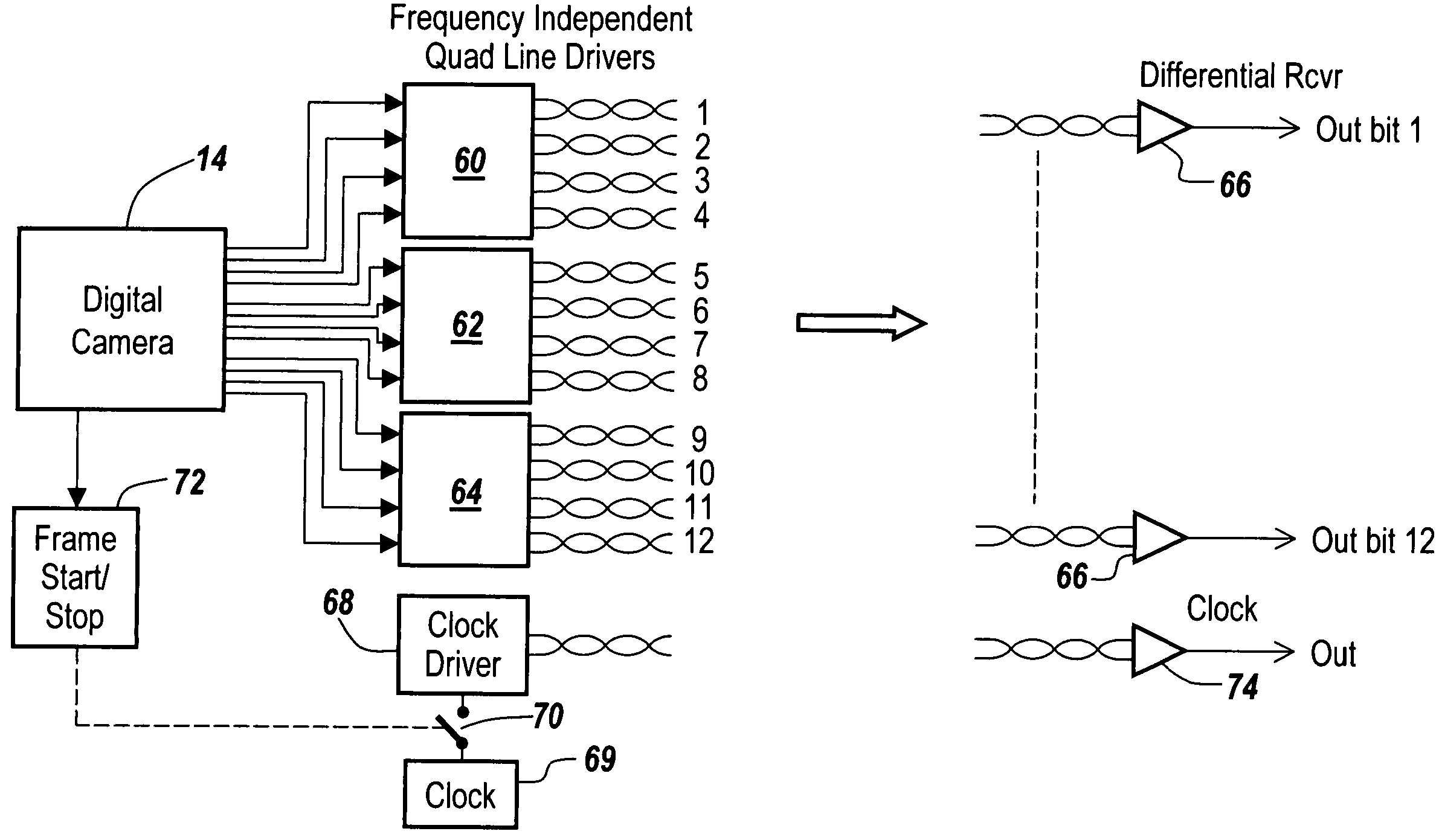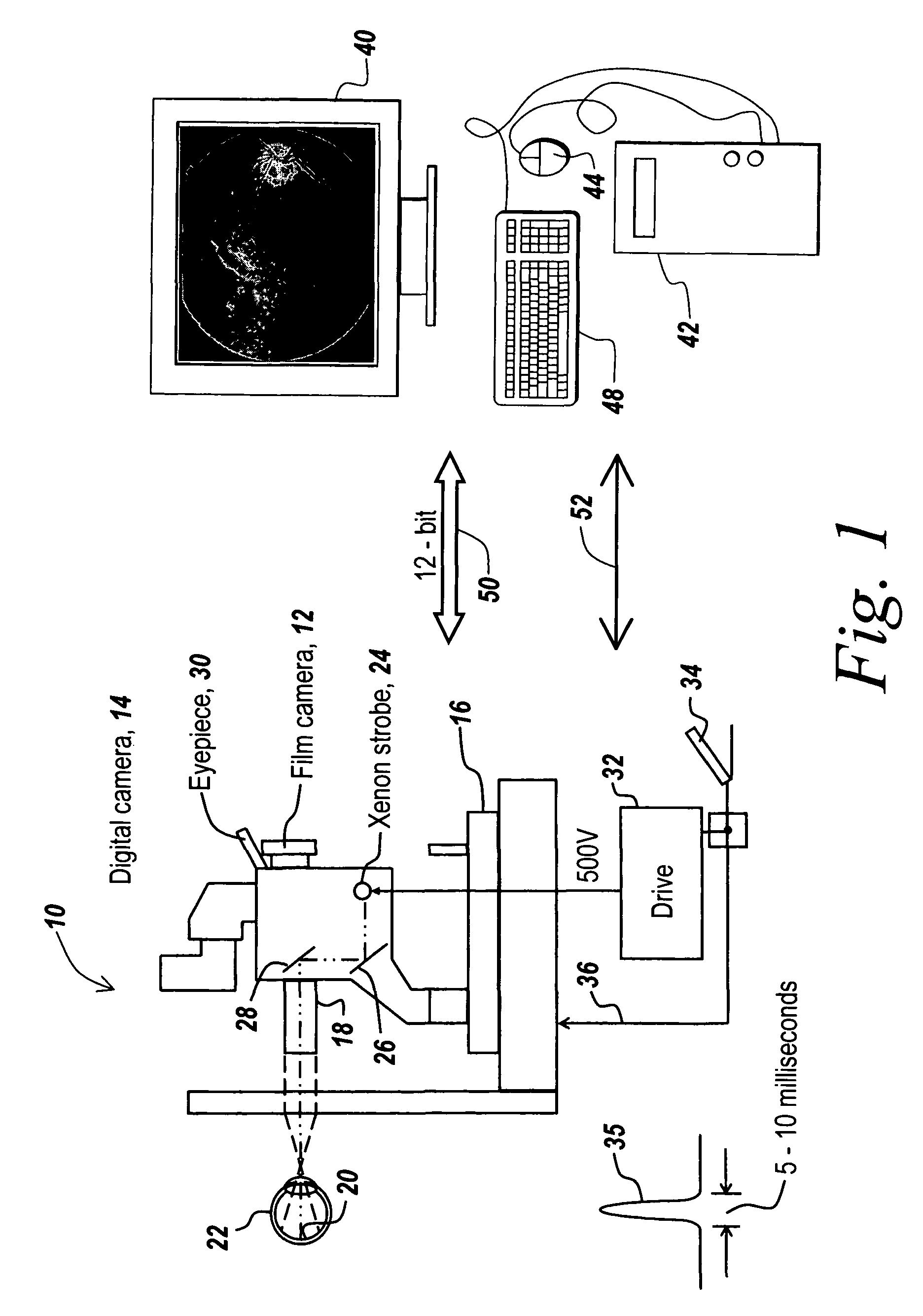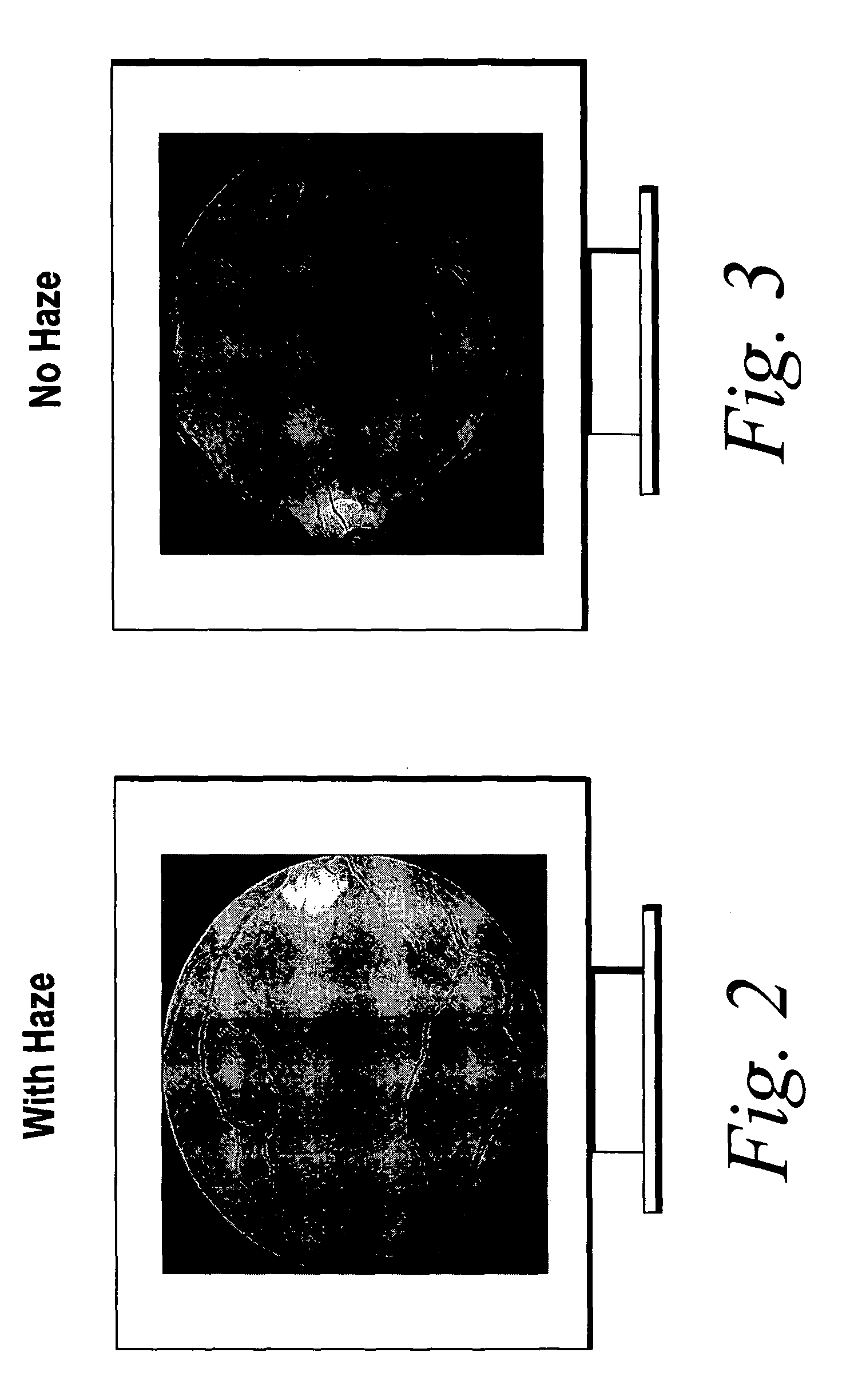Haze reduction method and apparatus for use in retinal imaging
a retinal image and haze reduction technology, applied in the field of retinal imaging, can solve the problems of reducing the current draw, unable to solve the current draw problem by reducing the data rate or frequency, and unable to reduce the current draw, so as to reduce the overall average current draw, eliminate haze, and reduce the driver current in digital retinal image transfer
- Summary
- Abstract
- Description
- Claims
- Application Information
AI Technical Summary
Benefits of technology
Problems solved by technology
Method used
Image
Examples
Embodiment Construction
[0037]Referring now to FIG. 1, by way of background a retinal imaging camera 10 includes a film camera 12 and a digital camera 14 mounted on a stand 16 such that an imaging system 18 images the retina 20 of eye 22 onto the focal planes of cameras 12 and 14. In order to illuminate retina 20, a xenon strobe lamp 24 has its output redirected by mirrors 26 and 28 out through imaging system 18 so that the output of xenon strobe 24 illuminates retina 20. Note that an eyepiece 30 is used for focusing both the digital and film camera as well as directing the optics to the appropriate portion of the eye. In one embodiment the strobe is flashed based on toggling of a foot switch 34.
[0038]It will be appreciated that foot switch 34 is also used to control camera 10 over line 36 to take the pictures such that any shuttering and exposure for either the film camera or the digital camera is controlled responsive to foot switch 34; or is actuated automatically if desired.
[0039]Note in this figure, a...
PUM
 Login to View More
Login to View More Abstract
Description
Claims
Application Information
 Login to View More
Login to View More - R&D
- Intellectual Property
- Life Sciences
- Materials
- Tech Scout
- Unparalleled Data Quality
- Higher Quality Content
- 60% Fewer Hallucinations
Browse by: Latest US Patents, China's latest patents, Technical Efficacy Thesaurus, Application Domain, Technology Topic, Popular Technical Reports.
© 2025 PatSnap. All rights reserved.Legal|Privacy policy|Modern Slavery Act Transparency Statement|Sitemap|About US| Contact US: help@patsnap.com



